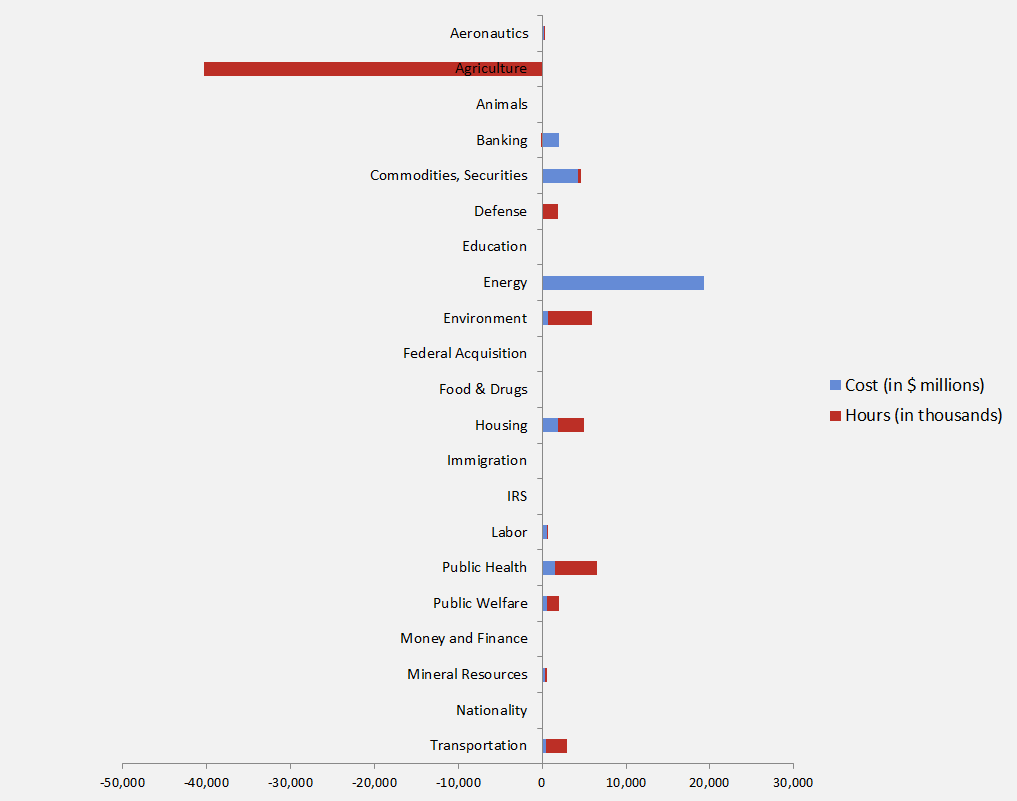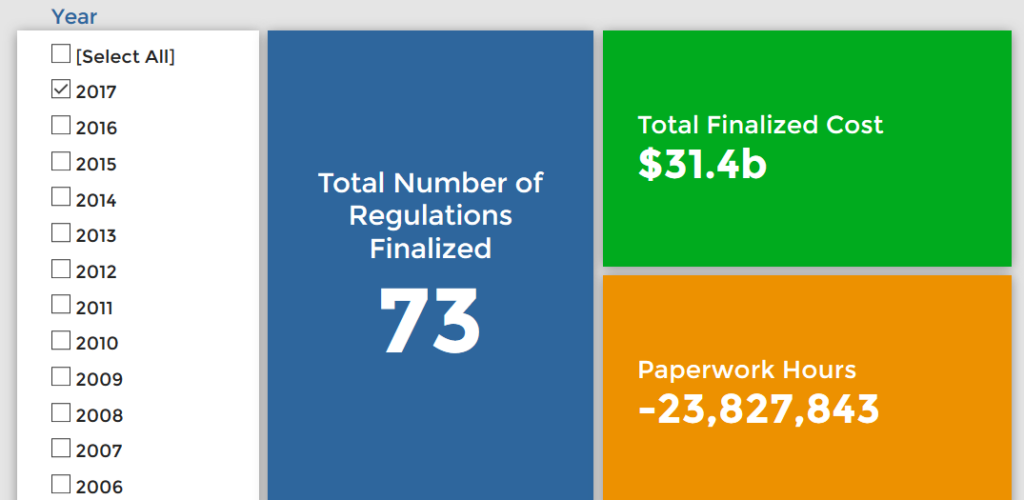Week in Regulation
May 22, 2017
Getting to $0 Gets Easier
As we have written previously, achieving $0 in net final regulatory costs by the end of the fiscal year is a difficult, but not impossible task. With initial savings from Congressional Review Act resolutions of disapproval, the administration has already cut more than $1 billion in burdens. On the other side, there has been no major final rule that has imposed notable costs. This week was no different, as just a handful of airworthiness proposals led the week. They combined for a mere $4.3 million in total costs. “Getting to $0” is still well within reach with roughly four months to go. The per capita regulatory burden for 2017 is $442.
Regulatory Toplines
- New Proposed Rules: 34
- New Final Rules: 46
- 2017 Total Pages of Regulation: 23,138
- 2017 Final Rules: $31.39 Billion
- 2017 Proposed Rules: $114.2 Billion
The American Action Forum (AAF) has catalogued regulations according to their codification in the Code of Federal Regulations (CFR). The CFR is organized into 50 titles, with each title corresponding to an industry or part of government. This snapshot of final rules (a change from earlier versions) will help to determine which sectors of the economy receive the highest number of regulatory actions.
Tracking Regulatory Modernization
For the immediate future, the CRA has run its course. Unless Congress exercises the so-called CRA “loophole” or the Consumer Financial Protection Bureau finalizes a controversial rule, the CRA likely won’t be used again until 2025. The numbers are now final for CRA resolutions addressing Obama-era rules; the House and Senate both passed 14 CRA resolutions, with the Senate passing 14 total and the House 15 in all. President Trump has signed all 14 and Congress and the administration have eliminated $3.7 billion in total regulatory costs and 4.2 million paperwork burden hours. There were 35 resolutions of disapproval introduced.
On regulatory budget implementation, below are the agencies that have accrued annual savings and are technically compliant with the president’s one-in, two-out budget:
- Defense: $400 million
- Interior: $360 million
- Education: $100 million
- Labor: $78 million
- HHS: $0.02 million
All non-DOL figures are the result of CRA resolutions of disapproval. Given their historic regulatory output, AAF can predict that Defense, Interior, and Education will likely meet the goal of $0 in net regulatory costs by the end of this fiscal year. However, if the $60 million rule that was proposed recently becomes final, HHS will need to find at least two regulations to offset the cost.
Affordable Care Act
Since passage, based on total lifetime costs of the regulations, the Affordable Care Act has imposed costs of $53 billion in final state and private-sector burdens and 176.9 million annual paperwork hours.
Dodd-Frank
Click here to view the total estimated revised costs from Dodd-Frank; since passage, the legislation has produced more than 74.8 million final paperwork burden hours and imposed $38.5 billion in direct compliance costs.
Total Burdens
Since January 1, the federal government has published $145.6 billion in compliance costs ($31.39 billion in final rules) and has cut 18.8 million paperwork burden hours (due to 23.8 million in reductions from final rules). Click below for the latest Reg Rodeo findings.












